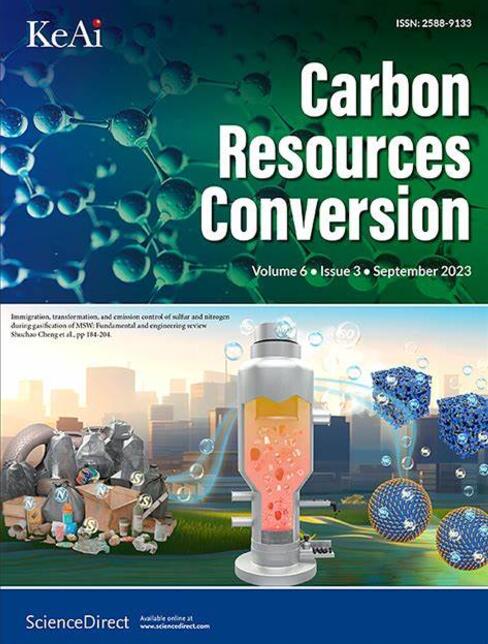Adsorption of heavy metals from water using teak-based carbon material through graft copolymerization
IF 7.5
3区 环境科学与生态学
Q2 ENERGY & FUELS
引用次数: 0
Abstract
This study presents the development of carbonaceous adsorbents derived from teak wood waste for the removal of heavy metals, such as lead (Pb2+), copper (Cu2+), and cadmium (Cd2+) from aqueous solutions. The adsorbents − hydrochar (TH), biochar (TB), and activated carbon (TAC) − were synthesized through thermal and chemical activation processes and further enhanced by graft copolymerization using acrylic acid. Comprehensive characterizations, including SEM, EDS, XPS, BET, and FTIR, revealed that grafting significantly increased surface functional groups (COOH and OH), thereby improving adsorption capacities. Adsorption isotherms followed the Langmuir model, indicating a chemisorption mechanism dominated by ion exchange and complexation. Post-grafting, maximum adsorption capacities for Pb2+ increased from 116 mg/g (TH) to 294 mg/g (THG), Cu2+ from 84 mg/g (TH) to 164 mg/g (THG), and Cd2+ from 106 mg/g (TH) to 170 mg/g (THG). The study concludes that grafted teak-based materials hold high potential as cost-effective and efficient adsorbents for water purification applications, contributing to sustainable waste management and environmental protection.

柚木基碳材料接枝共聚对水中重金属的吸附研究
本研究介绍了从柚木废料中提取的碳质吸附剂的开发,用于去除水溶液中的重金属,如铅(Pb2+),铜(Cu2+)和镉(Cd2+)。通过热活化法和化学活化法合成了氢炭(TH)、生物炭(TB)和活性炭(TAC),并通过丙烯酸接枝共聚进一步增强了吸附剂的性能。SEM、EDS、XPS、BET和FTIR等综合表征表明,接枝能显著增加表面官能团(COOH和OH),从而提高吸附能力。吸附等温线符合Langmuir模型,表明化学吸附机制以离子交换和络合为主。接枝后,Pb2+的最大吸附量从116 mg/g (THG)增加到294 mg/g (THG), Cu2+从84 mg/g (THG)增加到164 mg/g (THG), Cd2+从106 mg/g (TH)增加到170 mg/g (THG)。该研究得出结论,接枝柚木基材料在水净化应用中具有很高的成本效益和高效吸附剂的潜力,有助于可持续的废物管理和环境保护。
本文章由计算机程序翻译,如有差异,请以英文原文为准。
求助全文
约1分钟内获得全文
求助全文
来源期刊

Carbon Resources Conversion
Materials Science-Materials Science (miscellaneous)
CiteScore
9.90
自引率
11.70%
发文量
36
审稿时长
10 weeks
期刊介绍:
Carbon Resources Conversion (CRC) publishes fundamental studies and industrial developments regarding relevant technologies aiming for the clean, efficient, value-added, and low-carbon utilization of carbon-containing resources as fuel for energy and as feedstock for materials or chemicals from, for example, fossil fuels, biomass, syngas, CO2, hydrocarbons, and organic wastes via physical, thermal, chemical, biological, and other technical methods. CRC also publishes scientific and engineering studies on resource characterization and pretreatment, carbon material innovation and production, clean technologies related to carbon resource conversion and utilization, and various process-supporting technologies, including on-line or off-line measurement and monitoring, modeling, simulations focused on safe and efficient process operation and control, and process and equipment optimization.
 求助内容:
求助内容: 应助结果提醒方式:
应助结果提醒方式:


